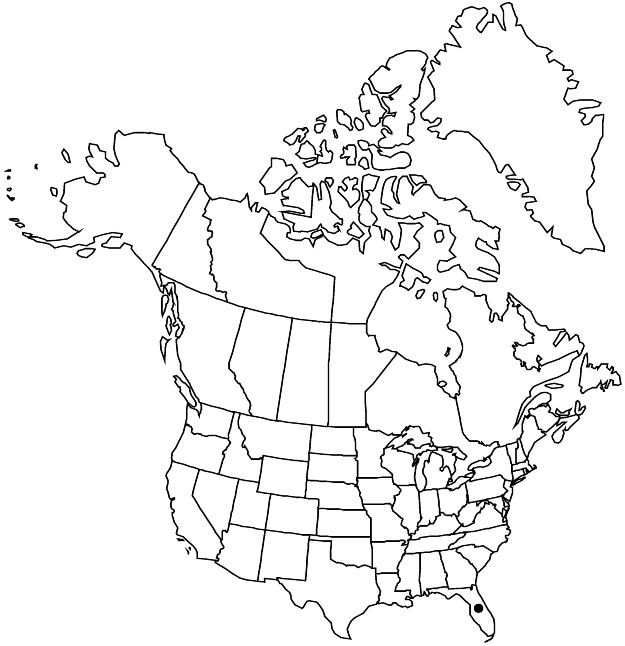Euphorbia trichotoma
Nov. Gen. Sp. 2(fol.): 48; 2(qto.): 60. 1817.
Herbs, perennial, with thick rootstock. Stems erect, branched, 15–40 cm, glabrous. Leaves: petiole absent; blade obovate to oblanceolate, 5–20 × 2–7 mm, base broadly attenuate, margins entire, apex acute to obtuse, surfaces glabrous; venation pinnate, very obscure, midvein prominent. Cyathial arrangement: terminal pleiochasial branches 3, each usually 1–2 times 3-branched, sometimes unbranched; pleiochasial bracts similar in shape and size to distal leaves, alternate; dichasial bracts distinct, obovate to oblanceolate, base broadly attenuate, margins entire, apex acute to obtuse; axillary cymose branches 0. Cyathia: peduncle 0.7–1 mm. Involucre hemispheric, 1–1.5 × 1.4–2 mm, glabrous; glands 5, elliptic to slightly crescent-shaped, 0.4–0.6 × 0.9–1.1 mm; horns divergent, 0.1–0.2 mm. Staminate flowers 8–10. Pistillate flowers: ovary glabrous; styles 0.2–0.4 mm, 2-fid. Capsules depressed-ovoid, 1.1–1.5 × 2–3 mm, strongly 3-lobed; cocci rounded, minutely papillate, sometimes appearing smooth, glabrous; columella 1.6–1.9 mm. Seeds white, ovoid-globose, 1.8–2 × 1.6–1.8 mm, smooth; caruncle ± rounded and flattened, 0.3 × 0.3 mm.
Phenology: Flowering and fruiting year-round (primarily spring–summer).
Habitat: Coastal beaches, sand dunes, thickets.
Elevation: 0–10 m.
Distribution

Fla., Mexico, West Indies, Central America
Discussion
Euphorbia trichotoma is found in coastal peninsular Florida from Hillsborough County south to Key West.
Selected References
None.
Lower Taxa
"connate" is not a number. "distinct" is not a number."connate" is not a number. "distinct" is not a number.